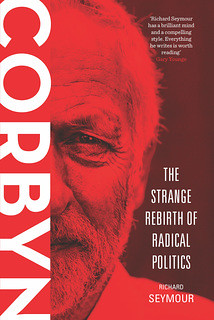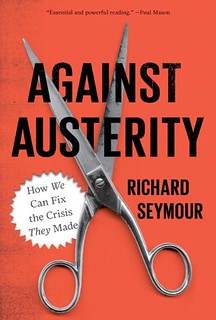Saturday, August 23, 2008
Afghanistan: the air war intensifies. posted by Richard Seymour
Remember that this is how it's done:"Yes, it is a civilian village, mud hut, like everything else in this country. But don’t say that. Say it’s a military compound. It’s a built-up area, barracks, command and control. Just like with the convoys: If it really was a convoy with civilian vehicles they were using for transport, we would just say hey, military convoy, troop transport."
As Tom Engelhardt has pointed out, this is an American tradition:
"On its front page, the New York Times labeled the operation in and around a village called My Lai 4 (or "Pinkville," as it was known to U.S. forces in the area) a significant success. "American troops caught a North Vietnamese force in a pincer movement on the central coastal plain yesterday, killing 128 enemy soldiers in day-long fighting." United Press International termed what happened there an "impressive victory," and added a bit of patriotic color: "The Vietcong broke and ran for their hide-out tunnels. Six-and-a-half hours later, ‘Pink Village' had become ‘Red, White and Blue Village."
All these dispatches from the "front" were, of course, military fairy tales. (There were no reporters in the vicinity.) It took over a year for a former GI named Ronald Ridenhour, who had heard about the bloody massacre from participants, and a young former AP reporter named Seymour Hersh working in Washington for a news service no one had ever heard of, to break the story, revealing that "red, white, and blue village" had just been red village -- the red of Vietnamese peasant blood. Over 400 elderly men, women, children, and babies had been slaughtered there by Charlie Company of Task Force Barker in a nearly day-long rampage."
The one thing the United States military can always be counted on to do, in other words, is to kill large numbers of civilians and then brazenly lie about it. This is why a US bombing raid that kills 76 civilians, following an attack the previous day that killed at least twenty, is described as a successful strike against 30 'insurgents'. The truth is that the entire military strategy of the US-led occupation is implicated in these massacres. As the quote from Chief Warrant Officer Dave Diaz above indicates, the American military is fully aware that a) it is fighting an unconventional guerilla force that doesn't have formal military outposts, bases and convoys, and b) it is a movement with roots in the civilian population itself. And since the US is increasingly reliant on aerial bombardment (more so in Afghanistan than in Iraq), it is inevitably going to slaughter large numbers of civilians. And then lie about it. Marc Garlasco, who used to work as an adviser to the Pentagon on high-value targeting, told Salon last year that the "magic number" was thirty: if the anticipated number of civilians who would die in an air strike was to be lower than thirty, it could go ahead without executive approval. Otherwise Bush or the Secretary of Defense would have to give approval. Well, of course, such expectations are entirely framed by the military's own requirements. They're not obliged to 'expect' large numbers of civilian casualties in a particular area, even where there are large numbers of civilians. If they want to hit the target, they can simply determine an area to be exclusively populated by insurgents, get JTAC to confirm a 'successful strike' and then move on to the next target.
Recall the data published by the CSIS last year, confirming a massive spike in US bombing raids in the summer of 2007, with 368 major strikes in July and 670 in August. This July, it was reported that air strikes had almost doubled since the previous year according to official figures (and, incidentally, the official figures seem to suggest an even higher daily strike rate than last year's CSIS figures did). This means that on average there are 68 major air strikes across Afghanistan each day, using 500 - 2,000lb bombs to pummel the area and then cannon fire to finish off the target. That's well over 2000 air strikes a month. I should say that increases the odds of blitzing someone's house, or a wedding ceremony, somewhat. This is a very rough extrapolation from last year's chart (click to enlarge):

I should point out that support for these bombing raids has rapidly evaporated even among the client elite. Every major political figure from Karzai downward prefers a truce with the opposition whom we so lazily dub 'Taliban' - but, of course, they don't run the show any more than the population, which also overwhelmingly prefers negotiations to the American escalation. Afghan newspapers, including the daily Hasht-e Sobh which broadly supports the occupation, have publicly called for an end to the bombing raids and no increases in foreign troops. They will be disappointed. On both sides of the Atlantic, the signs are that the war on Afghanistan is going to be intensified. The UK military leadership is recommending pulling troops out of Iraq and increasing troop levels in Helmand by 50%. Obama has consistently called for an increase in troop levels in Afghanistan, talking recently of an increase of 10,000 American soldiers to start with, more than a fifty percent increase on present levels.
The main aim of a future US presidency will be to get NATO members to commit more soldiers, and stop the coalition from fragmenting any further, especially after the Georgian debacle. An interesting article by Ian Traynor in today's Guardian confirms the diagnosis that NATO is hobbled by divisions, and overstretched in its commitments. Some of its members are wondering what use such an alliance has in this era. The fact is that in its main current role as an international fighting force in Afghanistan, it is currently being beaten by a poorly armed guerilla army which it substantially outnumbers. And you have to wonder what proportion of those guerillas are well-trained, seasoned combatants. If it were to get drawn into a simmering conflict with Russia, it would less resemble the military alliance of the Cold War than one of the pre-WWI treaty organisations like the Triple Alliance. Its longevity and stability would be in question, because of the differing orientations toward Russia within the organisation.
However, Obama would have the chance in the short-term to turn matters around, at least so far as Afghanistan is concerned. The Canadian government, and European governments which have sent troops to Afghanistan, continue to resist popular pressure to stop sending the troops there. Sarkozy, for example, is a strong backer of the war in Afghanistan. He will have to allow a parliamentary vote in September on whether France should continue to participate in the occupation, due to recent constitutional changes. Despite a clear majority wanting troops to be withdrawn from Afghanistan, parliament is sure to approve Sarkozy's policy of getting up America's arse and staying there (although it would seem an opportune point for mobilising the French antiwar movement). The German Defense Minister is pushing to increase troop levels by a thousand, about a 20% increase. Berlusconi has removed restrictions on Italian troop operations to enable them to take on more dangerous missions. All indications are that European political elites remain strongly committed to pacifying Afghanistan and by extension, the adjacent, strategically crucial, region. Obama can sell American hegemony on that front, for the time being, and it seems that some of his 'progressive' supporters are quite keen on the occupation of Afghanistan. So, lucky Afghanistan: a heightened sense of liberation, at gunpoint as well as from 20,000 feet, is coming soon.
Labels: afghanistan, air war, isaf, NATO, russia, US imperialism










